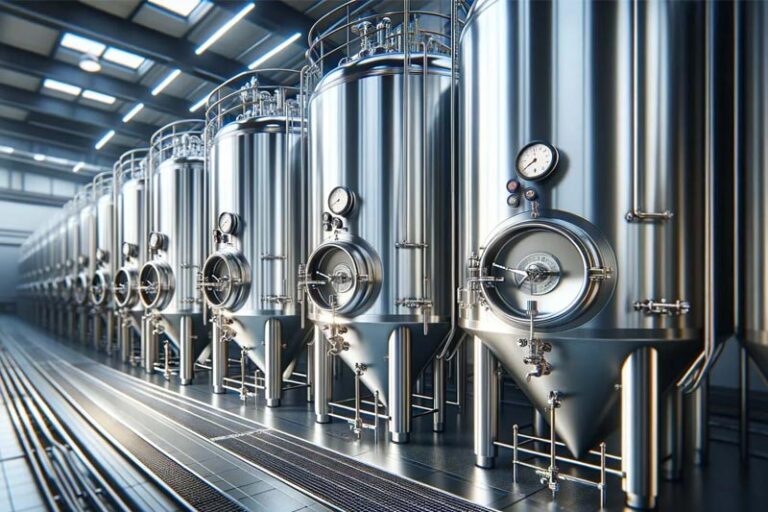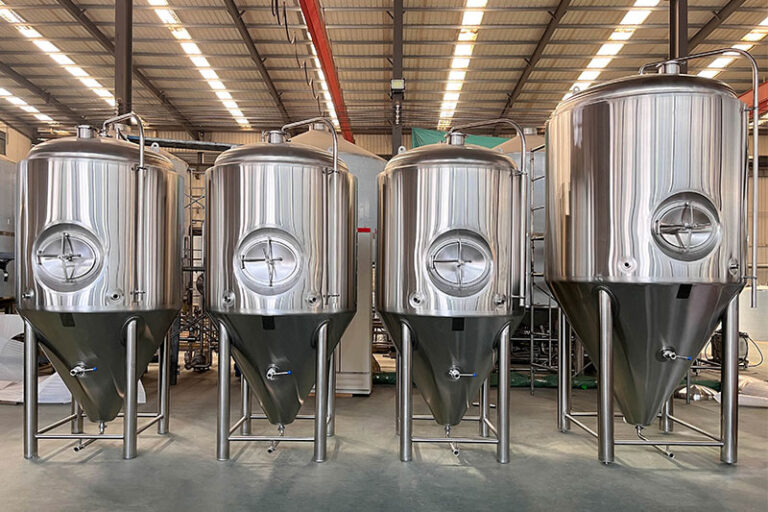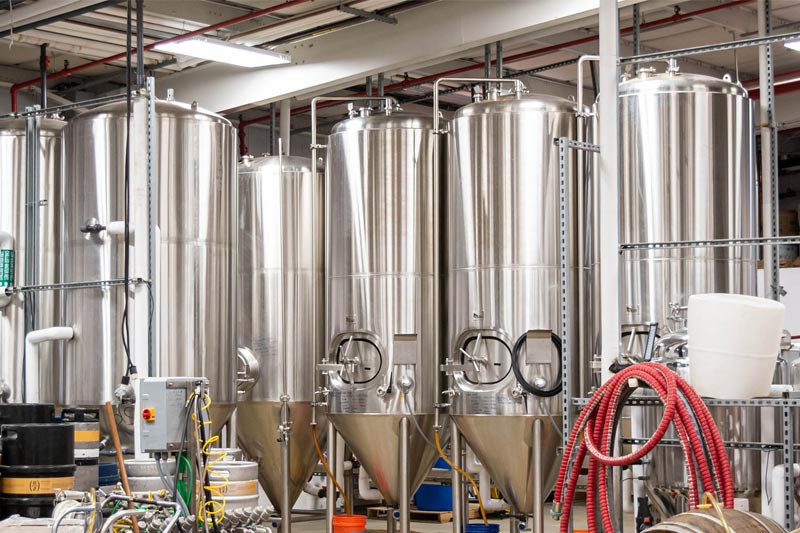Basic principles of fermentation
The basic principle of beer fermentation is a complex biochemical process involving a variety of biological, and chemical reactions and yeast activities. Fermentation refers to the process in which yeast converts sugar into alcohol, carbon dioxide, and other by-products through metabolic processes in an anaerobic or oxygen-deficient environment. This process is not just a chemical reaction, but a complex biological process affected by various environmental factors, of which temperature is one of the most critical factors.
- Yeast characteristics: Yeast shows different activities and growth rates under different temperature conditions. Usually within a suitable temperature range, the activity of yeast will be significantly improved, but when the temperature is too high or too low, the growth and metabolism of yeast will be inhibited, and may even lead to death of yeast.
- Fermentation type: Beer fermentation can be divided into upper fermentation and lower fermentation.Upper-fermentation yeast operates at higher temperatures, while lower-fermentation yeast operates at relatively lower temperatures. Different types of fermentation correspond to different flavors and characteristics, so temperature control is particularly important.

Beer Type Determines Fermentation Temperature
Fermentation temperature is a major difference in brewing ales and lagers. While we typically attribute this to the type of yeast strain, as we learn more about yeast genetics, many traditional lager strains are genetically ale strains and vice versa. Therefore, fermentation temperature can vary with various strains. The temperature of yeast-driven beer styles, such as saisons or wheat beers, is critical to the accuracy of the beer style.
Effect of temperature on yeast
The growth and reproduction of yeast are significantly affected by temperature. Research shows that within a suitable temperature range (usually between 18-24 degrees Celsius for top-fermented wine and 7-13 degrees Celsius for bottom-fermented wine), the reproduction rate of yeast will accelerate and the production of metabolites will also increase. On the contrary, if the temperature is too high, it will cause the inactivation of the yeast or significantly reduce its waste processing capacity, affecting the quality of the final beer.
Changes in temperature not only affect the growth rate of yeast but also affect the types and amounts of metabolites. For example, at higher temperatures, yeast may produce more esters and alcohols, which are often key components of beer flavor. At lower temperatures, fermentation slows down and the yeast is more inclined to produce fewer by-products, resulting in a clearer, cleaner flavor.
Temperature control and flavor development
- Production of flavor compounds: In beer brewing, the formation of flavor compounds is closely related to temperature. During the fermentation process, yeast produces a variety of compounds including esters, alcohols, aldehydes, ketones, etc. These compounds together constitute the flavor characteristics of beer.
- Generation of esters and alcohols: When the temperature increases, yeast will produce more esters and alcohols, which have a significant impact on the aroma and taste of beer. For example, during top fermentation, higher temperatures will make the beer fruitier, while lower temperatures will result in a cleaner, clearer flavor.
- Fermentation temperature of brown beer: For some beers with complex flavors, such as Porter and Stout, using a slightly higher temperature for fermentation can promote the production of richer flavor compounds, making the beer fuller and the flavor more complex.
How to control the fermentation speed of beer?
Temperature control
- Choose the right temperature: Yeast has different activities at different temperatures. Generally, upper fermentation yeast is suitable for fermentation at 18-24 degrees Celsius, while lower fermentation yeast is suitable for fermentation at low temperatures of 7-13 degrees Celsius. Choosing a suitable initial fermentation temperature can help yeast work at the best speed.
- Use temperature control equipment: Use constant temperature equipment, cooling jackets temperature-controlled water baths, and other technologies to monitor and adjust the fermentation temperature in real time to keep it within the preset range to prevent temperature fluctuations from affecting the fermentation process.
Yeast type and addition amount
- Selection of yeast type: Different types of yeast have different fermentation rates and flavor characteristics. Choose yeast that suits your beer style and taste requirements, and make sure it is suitable for the current fermentation conditions.
- Control the inoculation amount: Too much yeast will lead to too fast fermentation, and too little will lead to slow fermentation. Generally, it is more appropriate to control the yeast inoculation amount within the range of 1-2 million live yeast cells/ml.
Oxygen control
In the early stage of fermentation, an appropriate amount of oxygen helps the growth and metabolic activity of yeast. However, as fermentation proceeds, too much oxygen may cause oxidation reactions and inhibit yeast activity. Therefore, an appropriate amount of oxygen should be provided in the initial fermentation stage, but an anaerobic environment should be maintained during the main fermentation stage.
PH control
The activity of yeast is ideal in the range of pH 4.0 to 5.0. The pH value can be measured regularly during the fermentation process, and acids (such as lactic acid) or bases (such as sodium hydroxide) can be added to adjust the pH to optimize the fermentation rate.
Time management
Temperature management can be adopted in stages, maintaining a higher temperature in the early stage to promote rapid fermentation, and then gradually lowering the temperature to slow down the fermentation rate, help remove odors, and improve flavor.
Control of raw material composition
- Regulation of sugar concentration: Before fermentation begins, the sugar concentration of the fermentation liquid is adjusted through an appropriate saccharification process. High sugar concentration may increase the osmotic pressure of the yeast, affecting its growth and metabolism.
- Add appropriate amount of yeast nutrition: Yeast needs nutrition during the fermentation process, such as nitrogen sources, vitamins, etc. An appropriate amount of yeast nutrients can be added before fermentation to promote yeast activity and fermentation speed.
Real-time monitoring and adjustment
During the entire fermentation process, thermometers, pH meters, and other measuring tools are used to monitor key parameters and record data so that timely adjustments can be made when problems are found to ensure the smooth progress of the fermentation process.

How to choose a temperature-controlled fermenter?
Choosing a suitable temperature-controlled fermenter is one of the key factors in brewing high-quality beer. The appropriate fermentation temperature can affect the activity of yeast, the fermentation speed, and the final flavor and aroma.
- Stainless steel material: corrosion-resistant, easy to clean, suitable for long-term use, and usually a better choice.
- Shape and capacity: The common conical fermenter shape facilitates uniform temperature distribution. According to the scale of production, choose a fermenter with suitable capacity. Small-scale home brewing usually chooses a 5-gallon (about 19 liters) tank, while commercial brewing may require a larger tank (such as 50 gallons or more).
- Temperature control system: Use insulation materials and water bath methods to adjust the temperature by relying on the external environment. Equipped with cooling and heating equipment, the temperature of the fermentation liquid can be adjusted in real-time, which is common in commercial-scale brewing.
- Detection and recording: Choose a fermenter with precise temperature control and display functions, preferably within the range of ±1°C, so as to better meet the fermentation needs of yeast.
- Cleaning and maintenance: The design of the fermenter should be easy to clean, avoid yeast precipitation and impurity accumulation, and keep the fermenter hygienic. Choose a design with removable parts for easy and thorough cleaning and maintenance.
- Budget and brand: Choose a suitable fermentation tank according to your budget, balancing functionality and cost. Choosing products from well-known brands usually guarantees quality and after-sales service. For example, the fermentation equipment provided by Micet Craft is trustworthy in design and performance.

